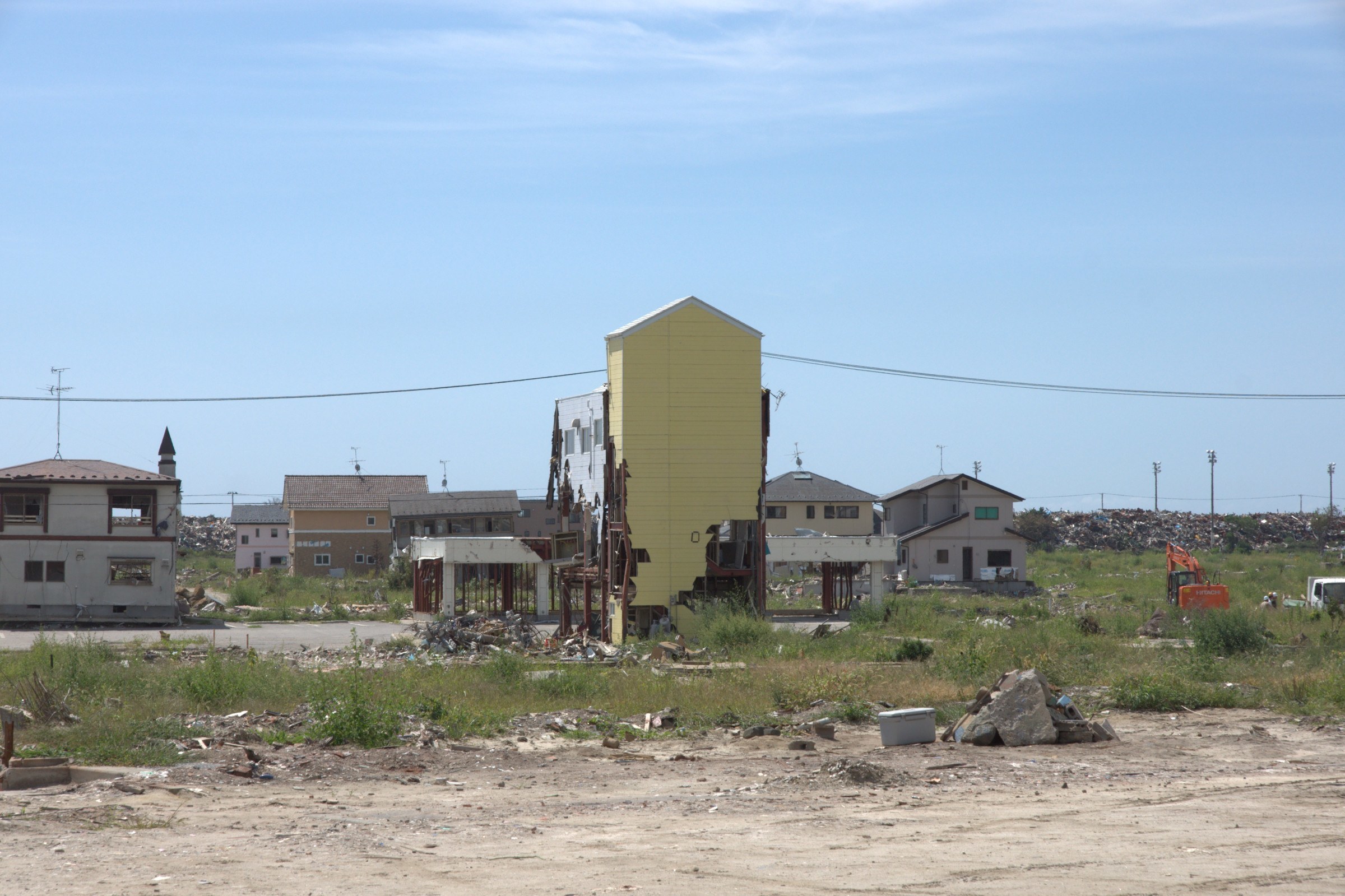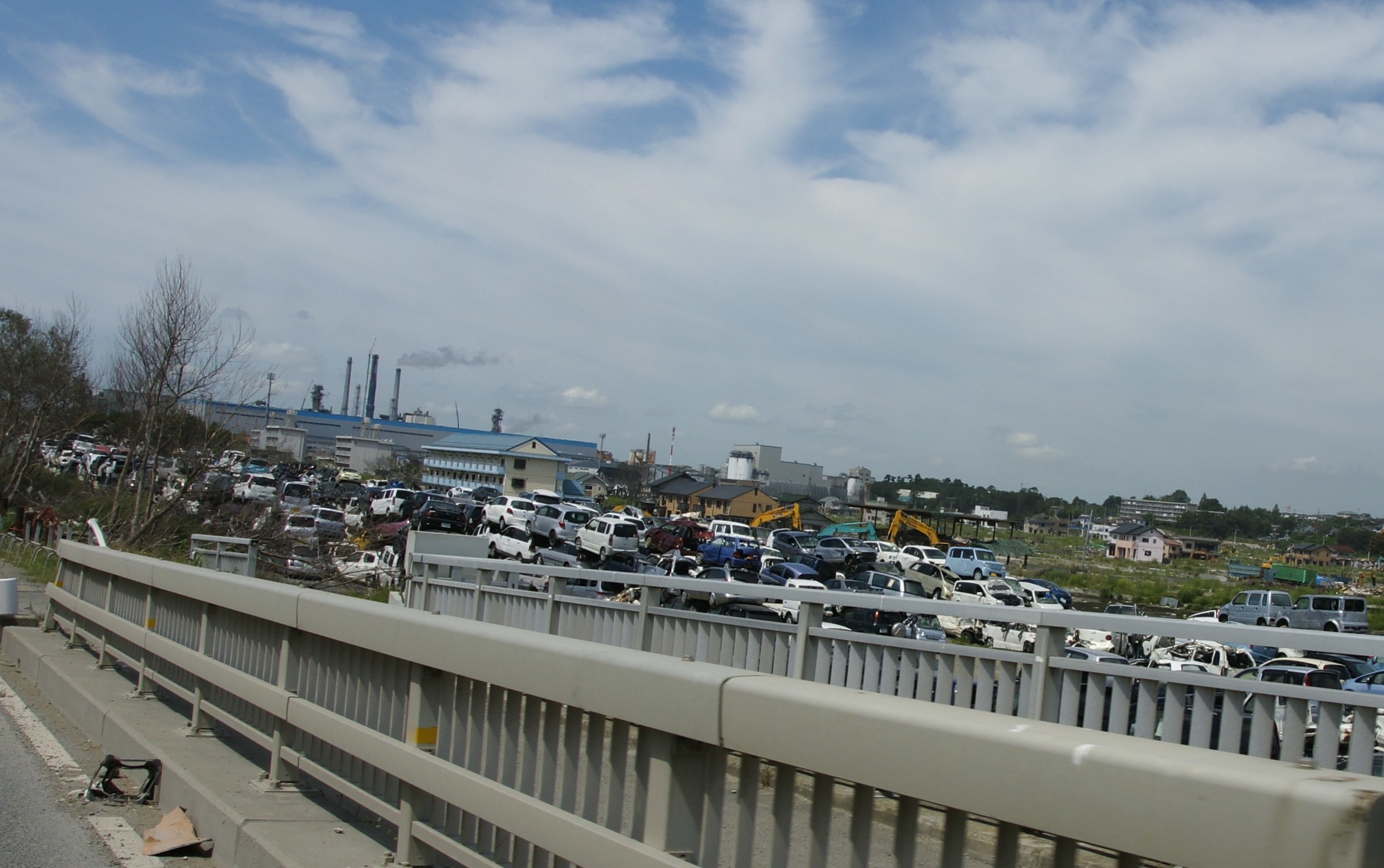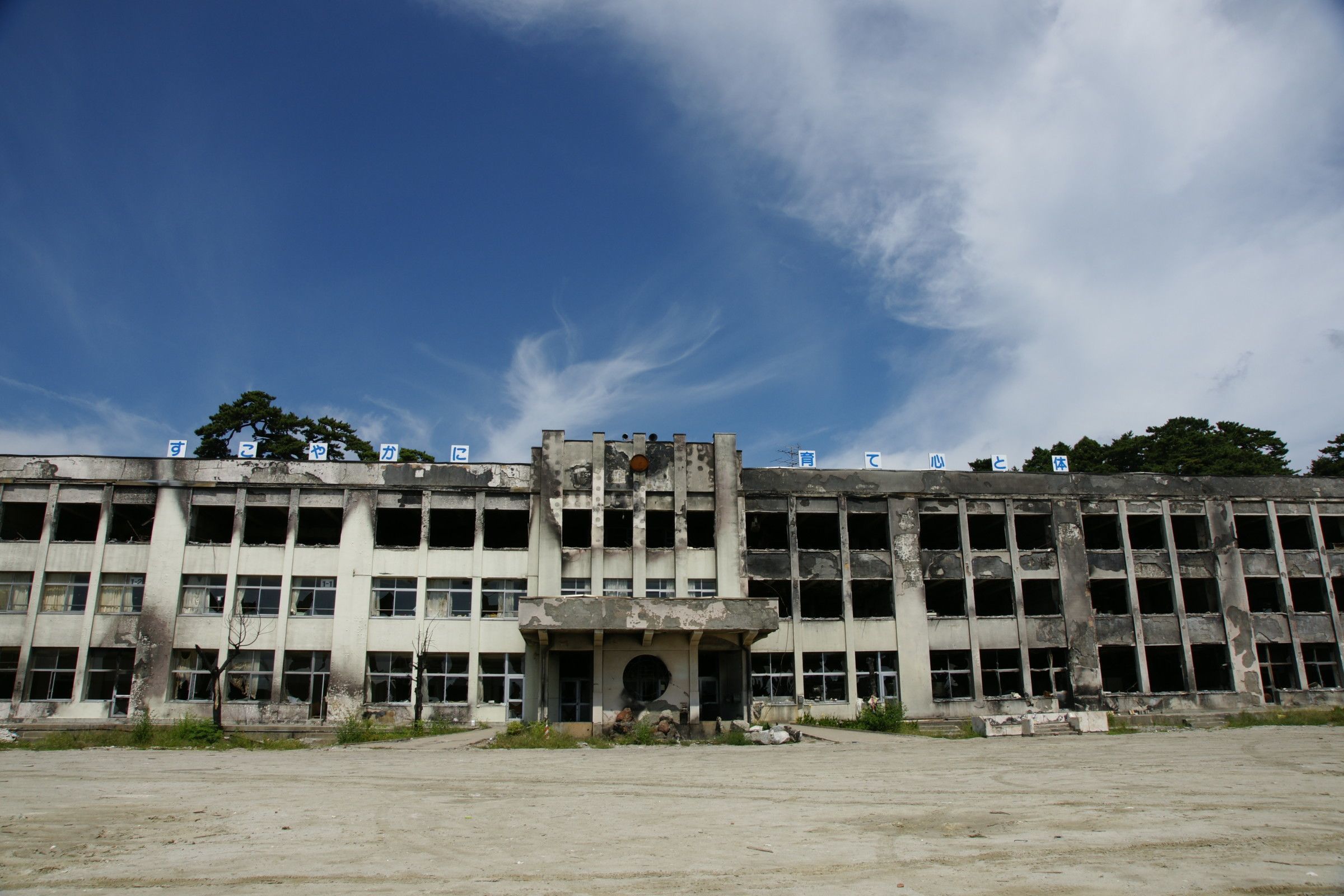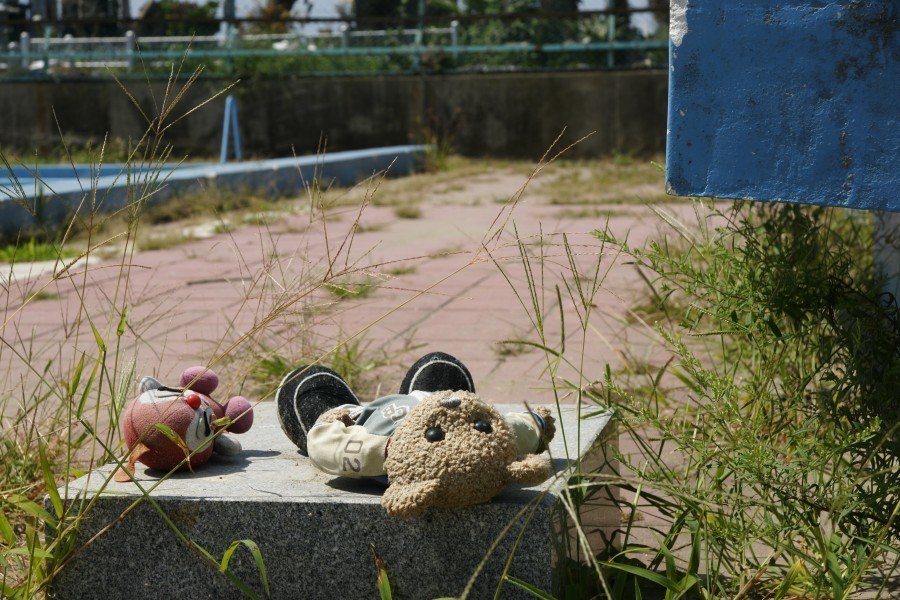Like this post? Help us by sharing it!
The tunnel that cuts through the mountain to the coastal area of Ishinomaki is around 500 metres long; a short distance yet one that divides two different worlds. On the west side, is the city, largely charmless in its proliferation of concrete buildings and prefabricated houses, roadside diners and over-head electricity cables. A first time visitor might describe it as shabby, or depressed, or “in need of investment”. In short it is like much of the rest of urban Japan outside of the shiny glass skyscrapers of the major metropolises. Dotted across the landscape is the occasional half fallen down building, perhaps you might think the victim of decades of neglect and lack of the funds or inclination to repair.
Crossing to the east side is a journey into the surreal. I try and imagine what an unknowing visitor would make of this vast open space, where unnatural mountains of twisted metal and concrete rubble rise up from a wasteland that stretches as far as the ocean in one direction and the tree covered hillsides in the other. Shells of buildings, their timbers splintered and roofs torn from their anchoring walls appear at intervals along the road; eerie, ghostlike scars on the skyline.


This is my first look at the destruction wrought on 11th March. It is impressive, awe inspiring and horrific. I am struck by the emptiness of the landscape – what is not here is far more disturbing to me than what remains. No houses, no offices, no trees, no gardens, no washing lines, no cars, no convenience stores, no shops and of course, no people. It is a holocaust, but one wrought by the power of the earth and the ocean not the misguided hand of man and an atomic bomb – the only other scene of destruction that seems to anyway parallel this.
This view of the effects of the tsunami on Ishinomaki is very different to the television pictures that immediately followed in the aftermath of the earthquake. The clean up operation has been in full swing for 5 months now and vast amounts have been accomplished: The sea of debris has been maneuvered by force of muscle and a small army of ‘Komatsu’ heavy plant machinery – Japan’s answer to the JCB digger – into enormous piles, something like a Japanese ‘gomi’ (rubbish/trash) day for giants.

Just a few short months ago, in this coastal area stood thousands of houses; now there are row upon row of neat, concrete rectangles that were the platforms on which the prefabricated housing that forms the bulk of modern Japanese homes, were built. In fact it seems an almost tidy picture of destruction. The powerful late summer sun beats down from a clear blue sky, baking the exposed foundations. It makes me wonder whether late afternoon on 11th March was a bright sunny day, befitting of the end of winter and the start of spring. It seems a rather inane thought yet this town was swept away on a perfectly normal day, just like any other.
The next scheduled stop of my visit to Ishinomaki is the Kadonowaki elementary school. All Japanese schools look pretty much the same: three or four stories of concrete, with evenly spaced windows stretching across a frontage of perhaps 100 metres. A dirt playing field sits in front or behind for baseball, softball, football and other sports. Here though, the windows are black holes. No light emanates from within; no glass remains and the exterior walls of the building are charred black from the fires that raged here for three days following the onslaught of the waves.

The school is located as far from the ocean as you can be in this area of Ishinomaki, built up against the hillside. This place was a designated emergency zone, where students and local residents alike convene at the time of a major earthquake. The sports field provides an ideal space, free from the dangers of falling debris – one of the biggest risks when an earthquake strikes. On this occasion the presence of mind of the teaching staff took the children to mountain behind the school. We were taken up the hillside to behind the building where the children and staff took shelter. Our informative driver-guide, Kikuta-san pointed out where later in the day, locals who had fled to the upper floors of the school had smashed the windows to escape to the hillside behind and up to higher ground.
As the last point of resistance before the land rises, the school building took the full force of the 10 metre wall of water, thick with debris and as witnessed on television screens across the world, cars; hundreds of them picked up and swept away. As metal crashed into and crumpled against the concrete structure the tanks of gasoline ignited and the building was gutted by fire.
We are informed that no students who were present at school when the earthquake struck died. It is a welcome and seemingly remarkable piece of news. However, tragically, amongst those young children who were at home sick or had left early for the day, several perished in the tsunami. Those locals unable to climb to the top of the school, primarily the elderly and disabled, were also taken by the waves. This is a sobering tale and casts me back to the adorable elementary school children I taught when working as an ALT in Toyota-city over ten years ago. The reality is that thousands of children lost their lives on 11th March. It is heartbreaking.
I find it hard to comprehend lives thrust from afternoon lessons, cleaning time, P.E. class into the heart of a disaster biblical in scale. I wonder how these kids must feel. What do they think about now? Some have lost a parent, or both parents. Most are now housed with their families in temporary accommodation, porta-cabins that offer many conveniences of modern living but in a tiny space perhaps smaller than my bedroom at home.
There is little time to stand and contemplate. I are beckoned to the car and my macabre tour continues as we drive half a mile or so towards the ocean.




